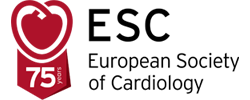
Preparticipation screening, while not generally mandatory, is recommended and widely practised. “However,” notes Dr. Solberg, “many countries already struggle to comply with existing recommendations. Additional tests, such as echocardiography, will add to the strain on resources. And there are still many questions to be answered around the use of echocardiography. Should we use it second line as we do today or use it for first-line screening? How often should it be performed – just once or more frequently, possibly annually? What types of problems should we screen for? Should it be expected to detect different types of cardiomyopathies or, ideally, may coronary artery anomalies be tracked? However, this is a more difficult task to conduct. Do we need to stratify by patient groups, such as the young vs. adults and men vs. women? There are more questions than answers at the moment.”
As an indicator of cardiac exercise tolerance, troponin has a great deal of potential, but its use in this area is in the early phases of development. Dr. Solberg explains, “Investigations on screening have generally focused on the preparticipation sports phase. However, some groups have now started to explore a new concept, screening after the athlete has exercised, e.g. post participation screening. Also, a new screening modality is being assessed, with blood measurement of an individual’s troponin release after exercise to investigate if it might point to increased risk of cardiac issues.”
Of note, the relationship between troponin and exercise has implications beyond the field of sports cardiology. “As an example,” says Dr. Solberg, “at hospitals around the world, an increase in troponin is frequently taken as an indication that a patient has cardiac damage. However, there are other reasons why troponin levels may be raised, including that the patient may recently have taken part in intensive exercise.” He concludes, “We are still trying to understand the relationship between troponin and exercise and how we can use these data.”

 Our mission: To reduce the burden of cardiovascular disease.
Our mission: To reduce the burden of cardiovascular disease.